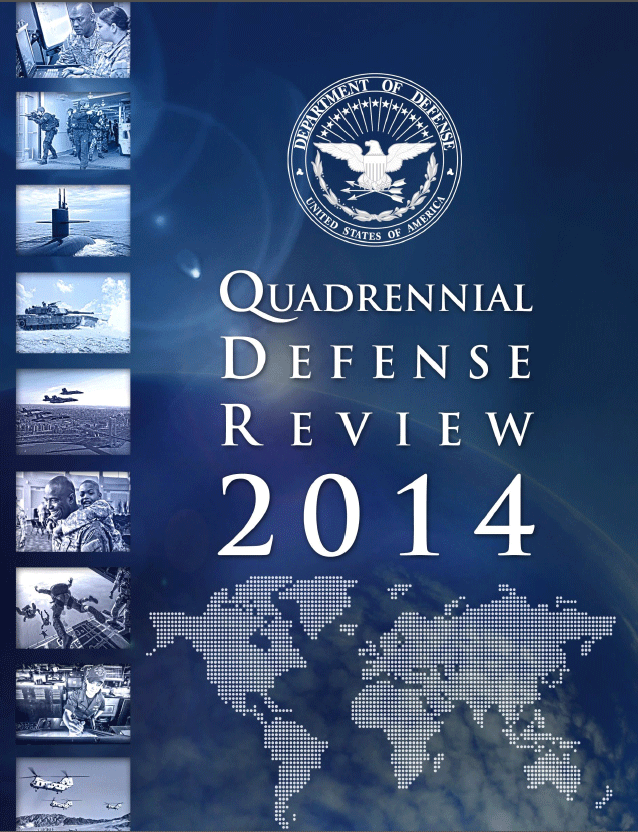I’ve had the opportunity and honor to meet with Marines and Sailors in the field, working hard and doing the incredibly difficult things they do….all with enthusiasm and a smile. My first thought was, “It’s good to be way outside the Beltway!” But that’s nothing new. Somewhere in the attic filled with the boxes of all the command plaques and farewell pictures that I’m not allowed to put on the walls is my favorite, the ubiquitous “Pentagon in the Rear View Mirror” farewell picture, signed by all my shipmates who were so sorry to see me go. My recent flight to freedom outside the Beltway has caused me to reflect on just how hard it is for many of the leaders in the Pentagon to leave their commands, far removed from the self-generated controversies inside the Beltway, and plunge themselves back into the budget battles, policy proliferation and day-to-day crises that erupt in the Pentagon. No wonder they are happy when they escape, even if only for a brief while.
So this is a round-about way to get to today’s topic, which is really all about decisions and an appreciation for just how difficult making them can be. I remember listening to Bill Lynn, former Deputy Secretary of Defense, at a briefing where he was opining about some of the challenges he faced. His point was that it’s really tough being the DEPSECDEF, because all of the easy decisions have be made by people below him in the chain of command. He wasn’t complaining about that and I don’t blame him. If you are in a leadership role and you find yourself making easy decisions, then I would submit something’s wrong. Your value to the organization is in making those tough decisions that no one else can or wants to make. That’s your “value proposition.” I used to tell my staff that I was willing to make any decision they asked me to make, but the ground rules were once they came to me and I made a decision, they were stuck with it. They were out of options. That tended to weed out the easy ones. (I’ve always hoped that it wasn’t because my decisions were so egregiously bad, by the way) There’s a great book which has had a substantial impact (see my course on Ethical Decision Making) on my life as a leader entitled “How Good People Make Tough Choices” by Dr. Rushworth Kidder. I commend it to you. The basic premise is that just about anyone can decide issues of right and wrong, black or white, legal or illegal, but the ability of leaders to decide between two equally “right” options is essential and requires the special talents of a leader. As a leader, you should strive to prepare yourself to make those types of decisions and reflect on the factors you consider when making them. One example is a simple one. It’s made every day in thousands of households every day: Do I take the family out to dinner tonight, or do I save the money and put it in the college fund? Both answers are equally good, I suppose. I teach a class on ethical decision making based on Dr. Kidder’s book and I always ask the question,”When you are driving in the countryside eating an apple, do you toss the core out when finished?” After all it’s biodegradable and some hungy creature might enjoy the treat. It will actually help the environment. Most people will say that they have done that. But it’s always interesting when I ask if before they do it, do they wait until there’s no car behind them. Hmmmm. If it’s a good decision, why wait?
Here is an example of they types of tough decisions faced by the leadership: Do we cut Commissary subsidies to free up money for operations and procurement? The dilemma here is that DoD needs the money to fund and modernize weapons systems, but at the same time troops used over $103.6 Million in food stamps at base commissaries in 2013. That’s a tough question to which either answer, yes or no, is correct. Dr. Kidder points out that in the process one should first check and see it there might not be a third option that isn’t readily apparent. Decision makers sometime get so focused on two options, they sometime overlook others. For instance, with over $100 Billon in working capital funds throughout the DoD, if they set a goal to become just 1 per cent more efficient, they would generate the money for commissary subsidies. I know our leaders have to make hundreds of these decisions each day. I respect that and trust their judgement. I only hope that in making their tough decisions they don’t become so focused on “yes or no”, that there might be a third alternative out there somewhere that was overlooked.






